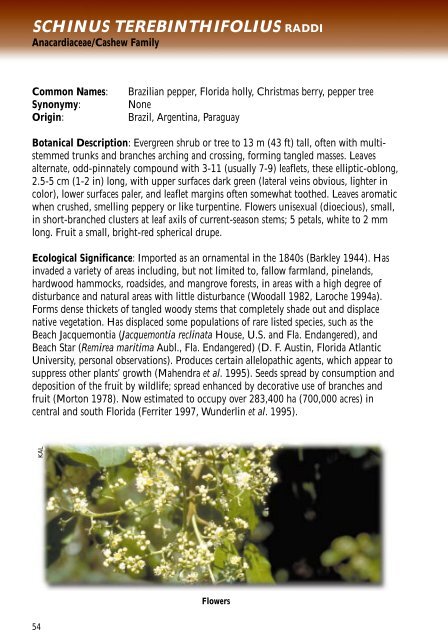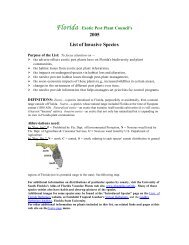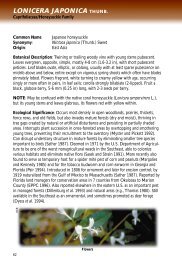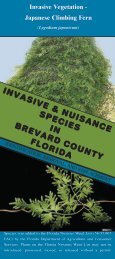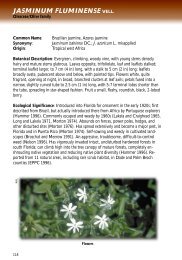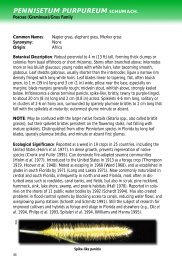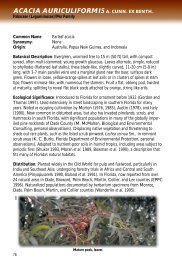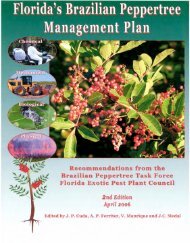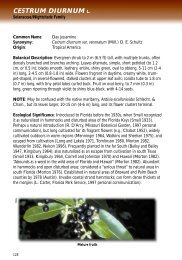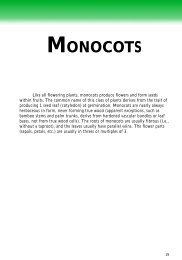DICOTS - Florida Exotic Pest Plant Council
DICOTS - Florida Exotic Pest Plant Council
DICOTS - Florida Exotic Pest Plant Council
You also want an ePaper? Increase the reach of your titles
YUMPU automatically turns print PDFs into web optimized ePapers that Google loves.
Schinus terebinthifolius Raddi<br />
Anacardiaceae/Cashew Family<br />
Common Names: Brazilian pepper, <strong>Florida</strong> holly, Christmas berry, pepper tree<br />
Synonymy: None<br />
Origin: Brazil, Argentina, Paraguay<br />
Botanical Description: Evergreen shrub or tree to 13 m (43 ft) tall, often with multistemmed<br />
trunks and branches arching and crossing, forming tangled masses. Leaves<br />
alternate, odd-pinnately compound with 3-11 (usually 7-9) leaflets, these elliptic-oblong,<br />
2.5-5 cm (1-2 in) long, with upper surfaces dark green (lateral veins obvious, lighter in<br />
color), lower surfaces paler, and leaflet margins often somewhat toothed. Leaves aromatic<br />
when crushed, smelling peppery or like turpentine. Flowers unisexual (dioecious), small,<br />
in short-branched clusters at leaf axils of current-season stems; 5 petals, white to 2 mm<br />
long. Fruit a small, bright-red spherical drupe.<br />
Ecological Significance: Imported as an ornamental in the 1840s (Barkley 1944). Has<br />
invaded a variety of areas including, but not limited to, fallow farmland, pinelands,<br />
hardwood hammocks, roadsides, and mangrove forests, in areas with a high degree of<br />
disturbance and natural areas with little disturbance (Woodall 1982, Laroche 1994a).<br />
Forms dense thickets of tangled woody stems that completely shade out and displace<br />
native vegetation. Has displaced some populations of rare listed species, such as the<br />
Beach Jacquemontia (Jacquemontia reclinata House, U.S. and Fla. Endangered), and<br />
Beach Star (Remirea maritima Aubl., Fla. Endangered) (D. F. Austin, <strong>Florida</strong> Atlantic<br />
University, personal observations). Produces certain allelopathic agents, which appear to<br />
suppress other plants’ growth (Mahendra et al. 1995). Seeds spread by consumption and<br />
deposition of the fruit by wildlife; spread enhanced by decorative use of branches and<br />
fruit (Morton 1978). Now estimated to occupy over 283,400 ha (700,000 acres) in<br />
central and south <strong>Florida</strong> (Ferriter 1997, Wunderlin et al. 1995).<br />
KAL<br />
54<br />
Flowers


